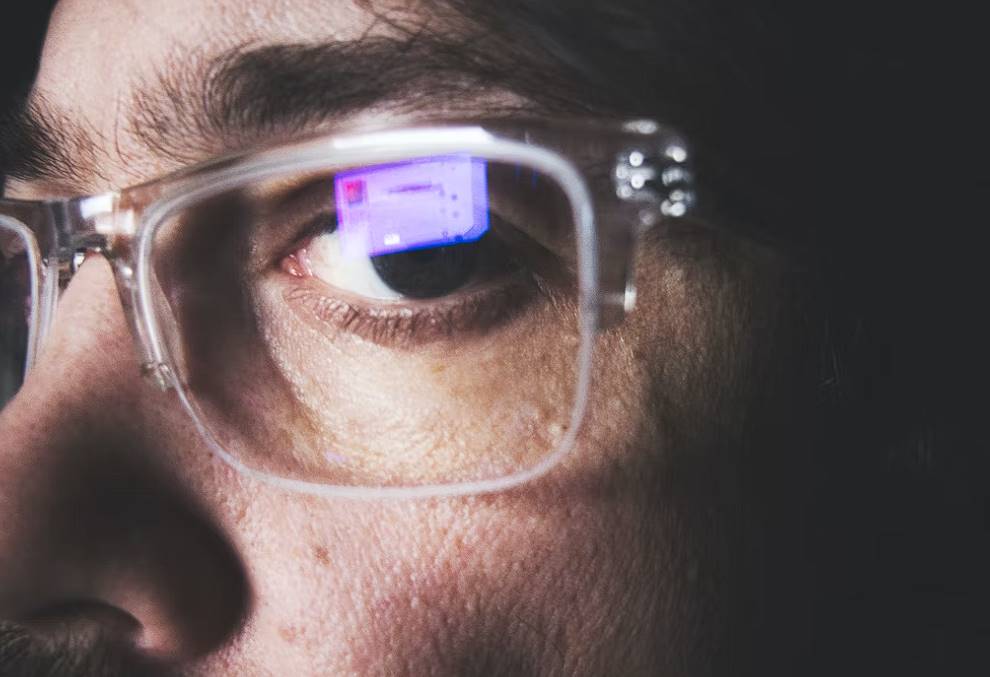Millions of people live with the illness known as colour blindness all throughout the world. It is characterised by an inability to differentiate between specific hues or detect colours in the conventional way they are seen. Colour blindness can substantially impact a person's day-to-day life, ranging from making it challenging to select clothing to presenting obstacles in particular careers.
On the other hand, recent developments in technology have led to the creation of glasses for those who are colour-blind, which are said to improve their ability to see colours more properly.
In recent years, colour-blind glasses have been proposed to help people with colour vision defects see colours more clearly. This post discusses how people with colour blindness can benefit from and use colour-correcting glasses.
What Is Colour Blindness?
Some people are born without or develop abnormal colour-sensing receptors (called retinal cones) in their eyes, making it impossible for them to perceive or distinguish between particular hues.
Colour blindness can affect people to varying degrees. Achromatopsia is the inability to perceive colours other than white, black, and grey. Yet, this occurs quite seldom. You can still make out some colour, but it will likely be muted or subdued.
Colour blindness is a hereditary condition. Most people of this kind are male. Women are more likely to be carriers of the illness, which means they may not show symptoms themselves but are able to pass it on to their offspring.
Likewise, optic nerve damage might bring on this condition. There are a number of diseases and disorders that can cause damage to the optic nerve and, consequently, colour blindness. It is also a side effect of some pharmaceuticals and hazardous substances.
What Are The Different Kinds Of Color Blindness?
The presence of red and green photopigments in the eye of a human being, as well as their efficient operation, is necessary for colour vision.
Red-green colour blindness, blue-yellow colour blindness, and total colour blindness are the three most common types of colour vision disorder known as colour blindness.
Red-green colour blindness is a condition in which a person is unable to differentiate between the colours red and green. It can be further divided into the following types:
Achromatopsia
Achromatopsia is the absence of all three types of cone cells and is also known as complete colour blindness. Since they are so sensitive to light, they only perceive the world in various grayscale forms.
Protanomaly
In this subtype, people have trouble identifying shades of red. There could be a fading or shifting of the reds towards the greens.
Protanopia
Protanopia individuals are born with an utter deficiency of red cone cells in their eyes. Colours of red, green, and even some tones of orange are confusing to them.
Deuteranomaly
Deuteranomaly sufferers see green more dimly than the general population. A possible redshift or dilution of greens could occur.
Deuteranopia
This form results from a lack of green cone cells in the retina. Deuteranopic individuals struggle to tell the colour green from red.
Tritanomaly
Tritanomaly sufferers have a diminished sensitivity to blue tones. Blues may look duller or even greener.
Tritanopia
Blue cone cells are absent in those with this extremely unusual condition. Tritanopia people have trouble telling the difference between blue and yellow.
What Are Colorblind Glasses?
The effects of colour blindness, formerly thought to be incurable and crippling, can now be mitigated by a variety of interventions. Coloured lenses and colour-blind spectacles can be useful tools for those who struggle with colour blindness.
These glasses may not be a permanent solution, but they can make up for visual impairments, which can greatly enhance one's quality of life. The visual experience of people who are colour-blind can be improved by increasing their ability to perceive and distinguish between colours. These cutting-edge aids have offered hope and practical assistance, making it possible to experience the world of colours with less stress and more delight.
Colour Blindness Lenses: How Do They Work?
Failure of the cones in the retina to properly relay information to the brain is the underlying cause of colour blindness.
The three cones (red, blue, and green) in your retina are able to detect different colours of light. Colour vision deficiency occurs when these cones are either not working properly or are significantly overlapping. A person with red-green colour blindness, for instance, would have cones for those colours completely overlapped.
Those who are colour-blind may benefit from our enhanced contrast, vibrancy, and depth perception glasses. Those who are colour-blind can now see the world around them thanks to advances in optical lens technology that allow them to absorb and filter the overlapping wavelengths.
Results may vary, and once again, this is not a cure. Because of individual differences in processing colour information, even people who aren't colour-blind may have different experiences. If you need to know if colour-blindness lenses will work for you, consult with an eye doctor in your area.
The Benefits Of Colorblind Glasses
People with colour vision deficiencies can benefit greatly from wearing colour-blind glasses. Some of the benefits they offer are as follows:
Enhanced Colour Perception
Colour-correcting eyewear has the remarkable ability to improve colour perception and discrimination. These glasses allow the user to see a wider range of colours by selectively modifying the wavelengths of light. This enhancement gives their visual experiences a new level of depth and richness, allowing them to see subtleties and nuances that were previously hidden.
When previously indistinguishable colours become distinct, it profoundly affects how people see and engage with the world around them. The ability to see colours more clearly is one of the many ways colour-correcting glasses improve people's quality of life.
Enhanced Safety
In some circumstances, colour-blinding spectacles can significantly improve safety. These glasses aid in reading maps, recognising warning signs, and understanding colour-coded information by enhancing the wearer's ability to distinguish between colours. Colour-blind glasses improve colour perception and thus aid in the avoidance of potential dangers and accidents caused by misunderstandings of colour.
For instance, knowing the difference between a yellow, red, and green traffic light can greatly improve traveller security. In a similar vein, these glasses are useful in industrial or workplace settings where colour-coded instructions or safety indicators are used to help workers make better decisions and react more safely.
Boosted Confidence
A pair of colour-blinding glasses can significantly alter a person's pride and assurance. These glasses improve colour perception, relieving the frustration and inadequacy that often accompany colour blindness. They promote community and acceptance by allowing people to participate fully in colour-based activities.
The confidence that comes from accurately distinguishing colours gives people a sense that they belong and expands their social circle. Colour-blind glasses give the wearer the knowledge that they can actively participate and navigate the world of colours with confidence and self-assurance, whether in appreciating art, choosing matching clothing, or simply savouring the beauty of a sunset.
Improved Everyday Life
The benefits of using colour-blind glasses in daily life are numerous. Wearing these glasses improves one's colour perception and discrimination to the point where one can take in the full beauty of a work of art. When one's ability to see tiny colour differences and brilliant colours improves, one's appreciation for nature's beauty deepens.
If you have good colour vision, cooking, gardening, and choosing clothes will be more fun and satisfying. Because of this improved colour perception, people who are colour-blind are more likely to feel accepted in social situations. This is because they can participate in activities and conversations that centre on colour.
Career Advancement
Professionals in fields requiring accurate colour differentiation may open new doors thanks to colour-blind glasses. Accurate colour perception is crucial in many fields, including graphic design, fashion, and the visual arts. The enhanced colour vision provided by these glasses should help their wearers excel in their chosen fields.
With a deeper knowledge of how colour combinations work together, graphic designers are able to create designs that are stunning to the eye. The fashion industry professionals can confidently match and coordinate colours, which results in harmonious ensembles. When artists have access to a wider range of colours, they are better able to express their creativity and give their works more depth and nuance. Colour-blind glasses are useful tools because they improve a person's colour perception, which enables them to perform better in their chosen fields and ultimately achieve greater success.
Colour-blind Glasses: Who Can Use Them?
Wearing colour-blind glasses can help those who are slightly or moderately colour-blind. However, if you have total colour blindness or severe colour deficiencies, these glasses won't help. This is due to the fact that colour-blind glasses can only increase the saturation of colours around the wearer, necessitating some preexisting colour sense.
Colour-blind people can purchase glasses without a prescription. They function similarly to sunglasses in that they restrict your peripheral vision.
The effectiveness of colour-blind glasses may be enhanced with continued use, according to recent studies, because the eye may adapt to the lenses over time.
Consider These Tips Before Buying Colorblindness Glasses.
If you're in the market for colour-blindness glasses or want to learn more about them, keep the following in mind.
Night Vision May Worsen With Glasses.
The light entering the eyes is likely reduced when using colour-blind glasses. Because of this, these glasses should not be used in low-light or nighttime settings. Reduced visibility in low-light conditions is a potential consequence of reduced light transmission. The best possible visual clarity and safety should be achieved through the use of alternative vision aids developed for night vision activities.
Contrast-Enhancing Glasses Are Different From Colour Blindness Glasses.
Photographic contrast can be improved with hunting or contrast-enhancing filter glasses, but their wearers may be unable to distinguish true colours. These glasses help with contrast perception, allowing you to see details in objects more clearly, but they do nothing to correct problems with colour vision. Those who want to improve their colour perception are better off with colour-blind glasses.
Adaptation Like Regular Glasses
Colour blind glasses, like any other prescription glasses, will require some getting used to. Adjusting to these glasses' increased colour vibrancy may take a few weeks. After a few days of wearing the glasses, the wearer's visual system will have adjusted to the altered colour perception and fully appreciate the benefits. It is important to be patient and persistent during this adjustment period so that your eyes and brain can work together to achieve the best colour perception from your glasses.
Expensive And Not Insurance-Covered
Glasses designed for those with colour blindness tend to cost more than standard prescription eyewear. This is largely because of the high price of producing the glasses due to the advanced technology and specialised materials used in their creation.
The precision engineering required to create the filters and lenses used to alter colour perception is reflected in the higher cost compared to regular prescription eyewear. But for those who suffer from colour blindness, investing in a pair of colour-correcting glasses can make a difference in how they experience and understand the visual world.
The Results May Vary Depending On The Level Of Deficiency.
The unique characteristics of colour deficiencies mean that each person's experience with and response to colour-blindness glasses will be different. Different people may have different types and degrees of colour vision deficiencies, so the results of wearing the glasses may vary widely.
Some people will see a significant improvement in their colour perception, while others will notice more subtle shifts in their vision. It is essential to have a clear understanding that the efficacy of colour-blindness glasses can be subjective and is highly dependent on the particular characteristics of each individual's colour-vision deficiency.
Conclusion
The inability to perceive or distinguish between certain colours is a hallmark of colorblindness, a worldwide condition. It can have serious repercussions for a person's daily life, such as making it challenging to choose clothing or creating roadblocks in some professions. Technology advancements have led to the invention of special spectacles for people who are colorblind, which supposedly enhances their colour vision.
Red-green colorblindness, blue-yellow colorblindness, and total colorblindness are the three most common forms of the disorder. Individuals with red-green colour blindness are unable to tell the two colours apart. Achromatopsia, Proteanomaly, Proteanopia, Deuteranomaly, Deuteranopia, Tritanopia, and Traniopy are all subtypes of Colour Blindness.
Color-blind people may benefit from wearing special glasses. They are a terrific way to improve one's quality of life and compensate for visual limitations. Improving one's capacity to perceive and distinguish between colours might enhance the visual experience for those who are colorblind. These modern tools have given people hope and real help, allowing them to enjoy the world of colour with less anxiety and more joy.
Wearing color-blind spectacles can improve your everyday life in many ways, including colour perception, safety, self-esteem, and mobility. Because they selectively alter the wavelengths of light, color-correcting glasses have the extraordinary capacity to enhance colour perception and discrimination, allowing their wearers to see a larger spectrum of hues. By bringing out previously unseen details, this improvement adds a new dimension of richness to visual encounters.
By restoring normal colour vision, color-blind people can feel more secure in their surroundings and more comfortable going about their daily routines. These glasses can help persons with colour blindness function more effectively in society by correcting the underlying reasons of their condition. Wearing glasses designed to correct for colour blindness can greatly enhance one's experience of life. Graphic designers, stylists, and artists can all benefit from a deeper understanding of colour theory thanks to these studies. Their only effect is to make the colours in the wearer's immediate environment more vibrant, therefore they may not be appropriate for people with total colour blindness or severe colour deficiencies.
Content Summary
- Colour blindness, a condition that affects millions worldwide, can have a significant impact on daily life and career choices.
- Technological advancements have led to the development of colour blind glasses to improve colour vision.
- Colour blindness is caused by the absence or abnormality of retinal cones, which affects the perception of specific hues.
- Different types of colour blindness include red-green, blue-yellow, and total colour blindness.
- Achromatopsia is complete colour blindness, where individuals perceive the world in grayscale.
- Protanomaly and protanopia affect the perception of red, while deuteranomaly and deuteranopia affect the perception of green.
- Tritanomaly and tritanopia affect the perception of blue.
- Colour blind glasses are designed to assist those with colour vision defects by enhancing contrast and filtering overlapping wavelengths.
- Benefits of colour blind glasses include improved colour perception, enhanced safety, boosted confidence, and improved everyday life.
- Colour blind glasses can help individuals appreciate art, enjoy nature, and engage in activities reliant on colour.
- Professionals in fields such as graphic design, fashion, and visual arts can benefit from improved colour vision.
- Colour blind glasses are suitable for individuals with slight to moderate colour blindness but not for those with total colour blindness or severe deficiencies.
- Colour blind glasses can be purchased without a prescription, similar to sunglasses.
- Continued use of colour blind glasses may enhance their effectiveness over time.
- Considerations when buying colour blindness glasses include potential worsening of night vision and differentiating them from contrast-enhancing glasses.
- Adapting to colour blind glasses may take time, but the visual system will adjust to the altered perception.
- Colour blind glasses tend to be more expensive due to advanced technology and specialized materials used in their production.
- Results may vary depending on the level and type of colour deficiency.
- Understanding the subjective nature of the glasses' efficacy is crucial for individuals with colour vision deficiencies.
- Consulting an eye doctor is recommended to determine if colour blind glasses are suitable for an individual's needs.
- Colour blindness is a common hereditary condition, with a higher prevalence among males, while females can be carriers.
- Optic nerve damage and certain medications can also cause colour blindness.
- Colour blindness can make it challenging to select clothing due to difficulty distinguishing colours.
- Colour-blind glasses offer hope and practical assistance, allowing individuals to experience the world of colours with less stress and more delight.
- These glasses work by modifying the wavelengths of light to enhance contrast, vibrancy, and depth perception.
- Improved colour perception and discrimination are key benefits of wearing colour-blind glasses.
- Colour-correcting eyewear allows users to see a wider range of colours, revealing subtleties and nuances previously hidden.
- Enhanced colour perception profoundly affects how individuals see and engage with the world, improving their overall quality of life.
- Colour-blind glasses can significantly improve safety by aiding in the recognition of warning signs and colour-coded information.
- Understanding traffic lights correctly is crucial for traveller safety, and colour-blind glasses can help in this regard.
- In industrial and workplace settings, colour-blind glasses enable better decision-making and safer reactions to colour-coded instructions and safety indicators.
- Wearing colour-blind glasses can boost a person's confidence and self-assurance, relieving frustration and inadequacy associated with colour blindness.
- These glasses promote acceptance and allow individuals to participate fully in colour-based activities.
- Colour-blind glasses enhance everyday life by improving colour perception in various aspects, such as appreciating art, gardening, and choosing clothes.
- Professionals in fields requiring accurate colour differentiation, such as graphic design and fashion, can benefit from wearing colour-blind glasses.
- Enhanced colour vision allows graphic designers to create visually stunning designs and fashion professionals to coordinate harmonious ensembles.
- Artists can express their creativity with a wider range of colours, adding depth and nuance to their works.
- Colour-blind glasses are most effective for individuals with slight to moderate colour blindness rather than total colour blindness.
- These glasses can be purchased without a prescription but restrict peripheral vision like sunglasses.
- It is important to be patient and persistent during the adjustment period when wearing colour-blind glasses.
- Colour-blind glasses tend to be more expensive due to the advanced technology and specialized materials used in their production.
- Investing in colour-correcting glasses can make a significant difference in how individuals experience and understand the visual world.
- The effectiveness of colour-blind glasses varies depending on the level and type of colour vision deficiency.
- Results can range from significant improvement in colour perception to more subtle shifts in vision.
- Understanding that the efficacy of colour-blind glasses is subjective is crucial, as each person's experience with them will be different.
- Night vision may worsen when using colour-blind glasses due to reduced light transmission.
- Contrast-enhancing glasses differ from colour-blind glasses as they improve contrast perception but do not correct colour vision problems.
- Colour-blind glasses require adaptation, and the visual system will adjust to the altered colour perception over time.
- It is important to differentiate between colour-blind glasses and alternative vision aids designed specifically for night vision activities.
- Consulting with an eye doctor is recommended before purchasing colour-blind glasses to determine their suitability and effectiveness for an individual's specific needs.
Frequently Asked Questions
No, colour-blind glasses cannot cure colour blindness. They are designed to enhance colour perception and help individuals with colour vision deficiency see a wider range of colours. However, they do not address the underlying genetic mutation or correct the condition permanently.
Colour-blind glasses may be more effective for certain types of colour blindness, such as red-green colour blindness. However, their effectiveness can vary depending on the individual and the severity of their colour vision deficiency. It is recommended to consult with an eye care professional to determine the suitability of colour-blind glasses for specific cases.
Colour-blind glasses are designed specifically for individuals with colour vision deficiency. Wearing colour-blind glasses without colour blindness may alter the perception of colours for individuals with normal colour vision, potentially leading to inaccurate colour identification.
Colour-blind glasses can benefit individuals working in professions where colour recognition is crucial, such as graphic design, art, and certain scientific fields. However, it is important to note that colour-blind glasses may not provide a complete solution, and additional accommodations or adaptations may be necessary.
Colour blind glasses are available from various manufacturers and retailers. It is advisable to consult with an eye care professional who specialises in vision correction and colour blindness to determine the most suitable options for your specific needs.









